|
STRATEGIES
We Use Power Rankings to Select
Stocks
Phil Erlanger Research has developed a proprietary database of
sentiment and relative strength data that uncovers those stocks
that have attractive technical patterns. Let's examine this in detail.
There are two (2) basic factors that we focus on:
PRICE ACTION
Most of what comprises technical analysis today focuses on some
manifestation of price action. Phil Erlanger Research believes that
"relative strength" is the most predictive form of price
action analysis. Relative strength relies less on subjective interpretation,
and more on simple number crunching. Quite simply, if a stock is
outperforming most other stocks, that strength is significant, and
usually has staying power. This quality of staying power is exactly
why relative strength numbers are related to future performance.
Relative strength is simply the price of a stock divided by the
price of an index (usually the S&P
500). Below is a historic chart of Micron Technology (MU). The blue
line is the "relative Strength" line:
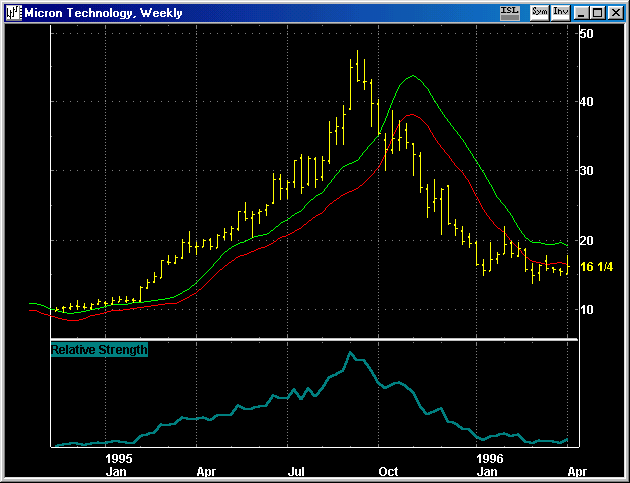
What is important about the relative strength line is its shape,
or pattern. A rising or uptrending relative strength line measures
a stock who's price is rising significantly more than the averages
in an up market (or falling less than the averages in a down market).
A falling relative strength trend likewise reflects a stock whose
price is falling faster that the averages in a down market (or rising
less than the averages in an up market).
Phil Erlanger Research uses nonlinear, pattern recognition algorithms
to quantify relative strength. The result is a scale from 0% to
100%, where 100% reflects the strongest pattern of relative strength:
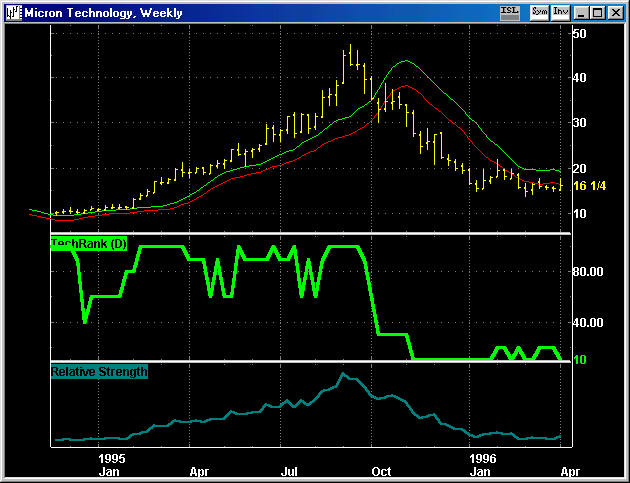
The Erlanger Technical Rank, available daily on over 5000 issues
via our Erlanger 2000 product, is a normalized expression of relative
strength. As such it is our best measure of price action!
SENTIMENT
In our opinion, "sentiment" analysis adds color to the
black and white of price action. For purposes of analyzing stocks
over the intermediate to long term, Phil Erlanger Research specializes
in the analysis of short interest data. Short selling is by its
very nature the expression of strong opinion. To make a bet that
a stock will go down, even in an up market, is a very strong measure
of sentiment.
Short interest data is normalized by dividing current short interest
by 1-month average daily volume (this is known as the short interest
ratio). Phil Erlanger Research divides current short interest by
12-month average daily volume - this gives us a truer measure of
short selling. We also split adjust our historical data.
Here is a sample of what our Short Interest Ratio looks like:
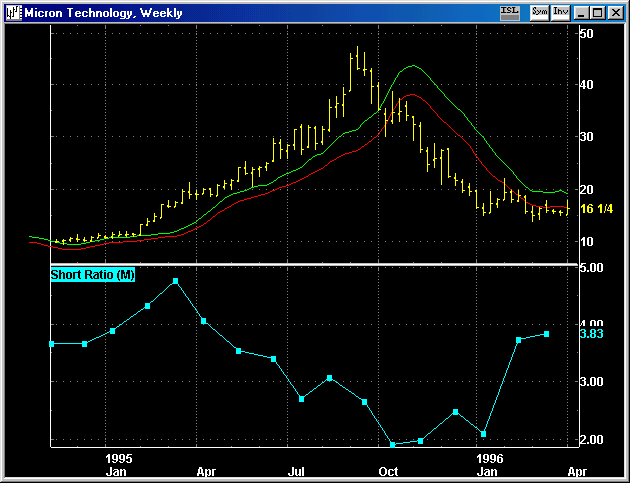
We normalize the Short Interest Ratio by taking the latest value,
and then calculate that ratios position within the range of short
ratios over the past five (5) years. For example, if the current
short interest ratio is 5.26, and the 5-year high is 5.36, and the
5-year low is 1.90, then our "Short Rank" is:
= (5.26 - 1.90) / (5.37 - 1.90)
= 96%
This 96% in essence measure the intensity of short selling. If
the current ratio was a new high, it would be 100%, the most intense
measure of short selling for that stock. If the current ratio was
a new low, it would be 0%, the least intense measure of short selling
for that stock. Now we have a measure we can use to compare one
stock versus another. More important, the scale of 0% to 100% is
the same as our relative strength Technical Rank, discussed above.
The combination of the two yields the Erlanger Power Rank. Here
is what it looks like:
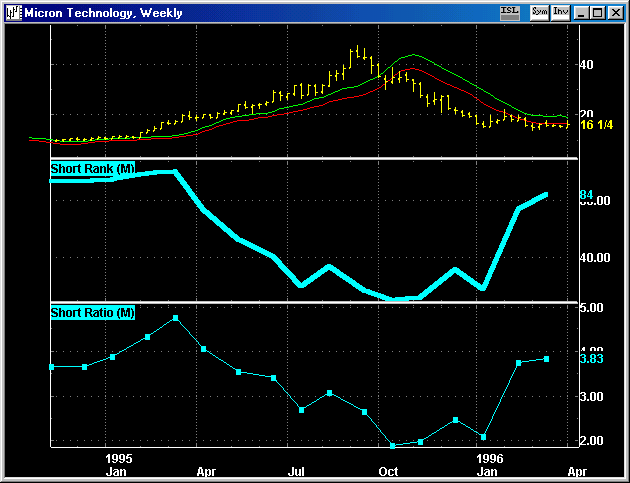
POWER RANK
The Erlanger Power Rank is a combination of the Technical Rank
(our measure of relative strength) and the Short Rank (our measure
of short selling intensity). On a scale of 0% to 100%, a reading
of 100% measures a situation when a stock has the strongest pattern
of relative strength at a time when short selling is at a high for
the past 5 years - a short squeeze situation. The higher the Power
Rank, the greater price is advancing against a heavier body of short
sellers. The lower the Power Rank, the weaker price is acting in
a stock where fewer feel the desire to sell short - a long squeeze!
Here is a chart of the Power Rank for MU:
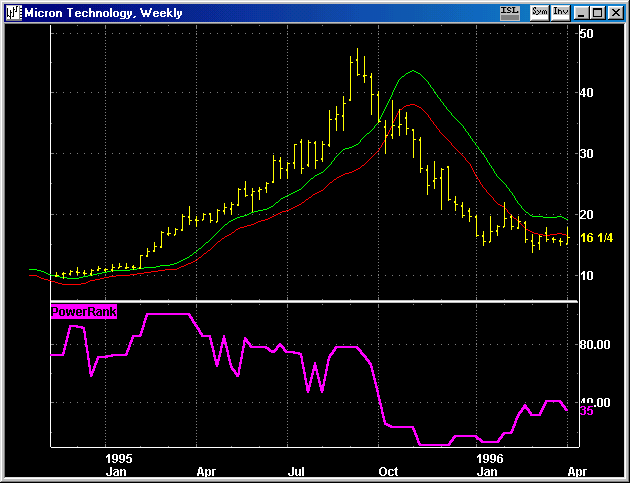
The following chart shows the annualized excess return for stocks
by 10 fractiles of Power Rank (left to right x-axis is worst to
best fractiles):
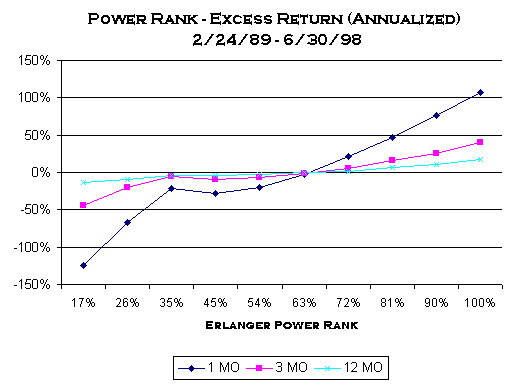
The lower left to higher right curves show that the better ranked
stocks as a group did better at outperforming the S&P 500 index
over 1 month, 3 month and 12 month rebalancing.
You can find out more about our data series (including performance
data) by viewing the online help system for Erlanger 2000. Simply
browse to: http://www.erlanger2000.com/E2KHelp.htm
|





